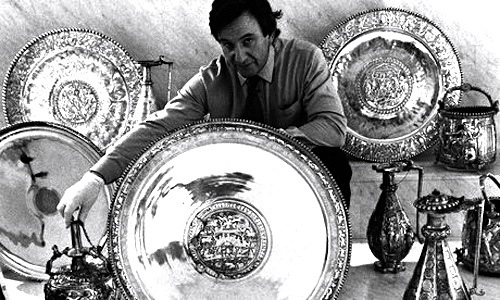
The Sevso Treasure is a one of the finest examples of late Roman Empire silver objects. It is alternately called the Seuso Treasure from the Hungarian Seuso-kincsek. It first appeared for sale in London in 1980 and was bought by a group headed by Spencer Comptom, 7th Marquess of Northampton. Lord Comptom et al put it up for sale in New York at Sotheby’s in 1990, but when the documentation about its provenance was proved to be false, it was withdrawn. Many countries, Hungary, Lebanon and Yugoslavia, claimed the silver horde had been found in their country. A US court rejected these claims and it was again in the possession of Spencer Compton. Over the decades there has been many claims and counter claims. There is solid evidence now that the silver pieces were acquired and sold after the murder of an Hungarian soldier who had discovered the pieces when he was illegally digging in an archaeological site in Hungary. Scotland Yard has an open case on the Sevso Treasure. But Hungary’s claims have been validated and on March 26, 2014 seven pieces from the Sevso Treasure were sold to the Hungarian government. The Romans had conquered and settled in Hungary in the 1st century BC and in the next 400 years had built Pannonia, as it was called, into a prosperous and vital area. One wonders but will NEVER know what wealthy Hungarian or Roman originally commissioned and owned this exquisite collection of silver ware and we will NEVER know why his collection was buried and abandoned.—Sandra Sweeny Silver
A fascinating 48 minute video about this controversial treasure.
